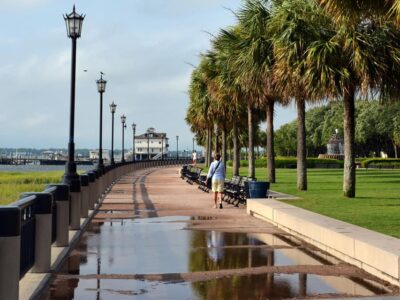Tucked away in the northeastern region of the United States is, to some, a cultural oddity of a state. It is the smallest in the Union — its main claim to fame.
Of course, the state in question is “Lil Rhody,” Rhode Island.
However, as living proof that big things come in small packages, one would be foolish to dismiss the Ocean State out of hand for its relatively tiny land mass. Indeed, Rhode Island has one of the most fascinating and impressive histories of any of its contemporary neighboring states.
In many ways, Rhode Island was ahead of its time, even at its very founding. The story of the founding of the U.S. is a well-trod one: religious dissidents left England to find religious freedom in the New World.
However, the story of the fight for religious freedom doesn’t end with the Pilgrims and Plymouth Rock. The fight to worship as one felt they needed or wanted to continue, and the battle led to the founding of Rhode Island, the first colony established by a refugee, Roger Williams, who left the Massachusetts colony to seek greater religious freedom.
Furthering its place in the American story as a renegade region filled with independent-minded people, the Rhode Island colony was the first to call for a Continental Congress and to renounce allegiance to the English crown.
There is so much to learn about Lil Rhody, even today! Its vitally important stories are told in part in its three National Monuments. Read on to learn more!
Roger Williams National Memorial: This memorial is not just a tribute to Rhode Island’s founder but also its founding principle: freedom of religion. Roger Williams famously declared in 1644, “I acknowledge that to molest any person, Jew or Gentile, for either professing doctrine, or practicing worship merely religious or spiritual, is to persecute him, and such a person (whether his doctrine or practice be true or false) suffers persecution for conscience.” For this principle, he was banished by the English in the Massachusetts colony and was saved by Native people inhabiting modern-day Rhode Island. There, he built the colony and the state known today. The Roger Williams National Memorial stands in his honor, aiming to teach future generations about the sacrifices made here in the name of religious freedom.
Photo Courtesy Roger Williams National Memorial
Rhode Island State House: Aside from being the seat of power in the state capital of Providence, the state house is a must-see for architecture enthusiasts. A shining example of American Renaissance architecture, it was designed by the firm of McKim, Mead & White, which won a national competition to design the building. Construction took more than nine years, and the state house was completed and opened in 1904. Today, it includes offices for the governor and lieutenant governor and houses the General Assembly chambers. For fans of local and state government and architecture lovers, the Rhode Island State House is a rare serving of both and can’t be passed by.
Photo Courtesy Library of Congress
Burnside Park: Another stunning landmark in Providence can be found at the downtown Burnside Park, which contains two of the city’s and state’s signature art pieces: the Bajnotti Fountain and the Burnside statue. The fountain was a gift from Paul Bajnotti to the city to honor his late wife, Carrie Mathilde Brown, who came from a prominent family. The statue commemorates the memory of Gen. Ambrose Burnside, the former governor and Civil War veteran. The picturesque park is a gathering place in the bustling city center and a favorite spot for downtown dwellers. Fun fact: the term “sideburns” comes from the famous general’s facial hair, which is on full display on his famous statue. This park is a must-visit when passing through Providence!
Photo Courtesy Visit Rhode Island





